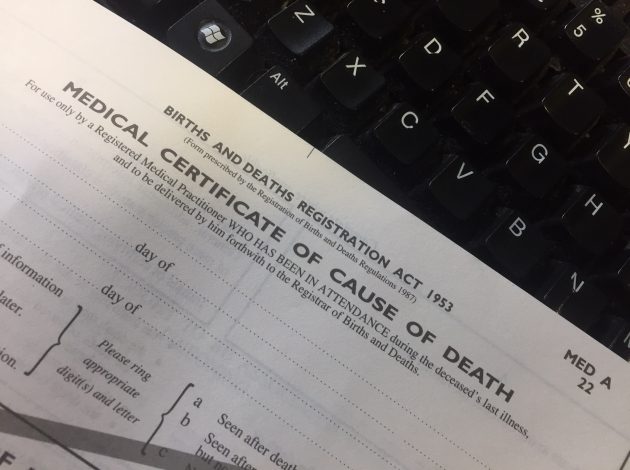A spate of news stories has claimed that March is one of the ‘deadliest’ months with more deaths occurring over the past five years than in most other months. But as Sarah Caul explains, those numbers don’t quite add up.
According to media reports, some luridly referring to a so-called ‘calendar of death’, some 221,000 people have died in March over the past few years.
That would certainly be more than most other months over that period. But it is also just plain wrong, an error resulting from an elementary statistical mistake that confuses the point when deaths occurs and when they are registered.
Statistics on death registrations and death occurrences are two very different things – and the ONS publishes both.
The ONS is not informed of a death until it is registered. This is done at a registry office, usually with the person’s next of kin. In the majority of cases, a death is registered within five days of when it occurred, but every year thousands of deaths are not registered until much later.
The main reason a registration can be delayed is when it needs to be investigated by a coroner, for example after an accident. Our latest figures show that in 2016, 39% of deaths were not registered within five days and almost 5% had not been registered after three months.
Mortality statistics are usually presented based on the number of deaths registered in a particular period because, while this is an incomplete count of all the deaths that have occurred, it allows the figures to be produced quickly.
However, for some purposes it’s important to know the exact date of occurrence – for example for calculating estimates of excess mortality in the winter months.
So, while 221,000 deaths were registered in March of the last five years (2014-18), many of these deaths would have occurred in the previous months.
Although March is the second most common month for a death to be registered, it is the third most common month of death, according to our death occurrence data. During the most recent five-year period that this data is available (2012-16) 232,591 people died in March.
Our death occurrence data shows that January was the most common month of death with 249,250 deaths in 2012-16, followed by December with 244,293.
Meanwhile, the month with the lowest number of death occurrence during the same five-year period was September with 191,370 deaths – 7.5% of the 2,566,807 total for the whole 60 months.
Therefore, the headline-grabbing media stories last week do not give an accurate picture on the months people are actually dying.
It’s also misleading to suggest that these monthly totals reflect when any particular person is most likely to die. The risk of death varies greatly from person to person, depending on their age, sex and other circumstances. In particular, the ‘excess mortality’ in the winter months affects mainly elderly people and those who already have serious health problems.
The most important point is to look after your health, seek appropriate care if you feel ill, and keep warm in the winter months. And remember that no-one ever died just because of the date.
ONS statistician
Sarah Caul
